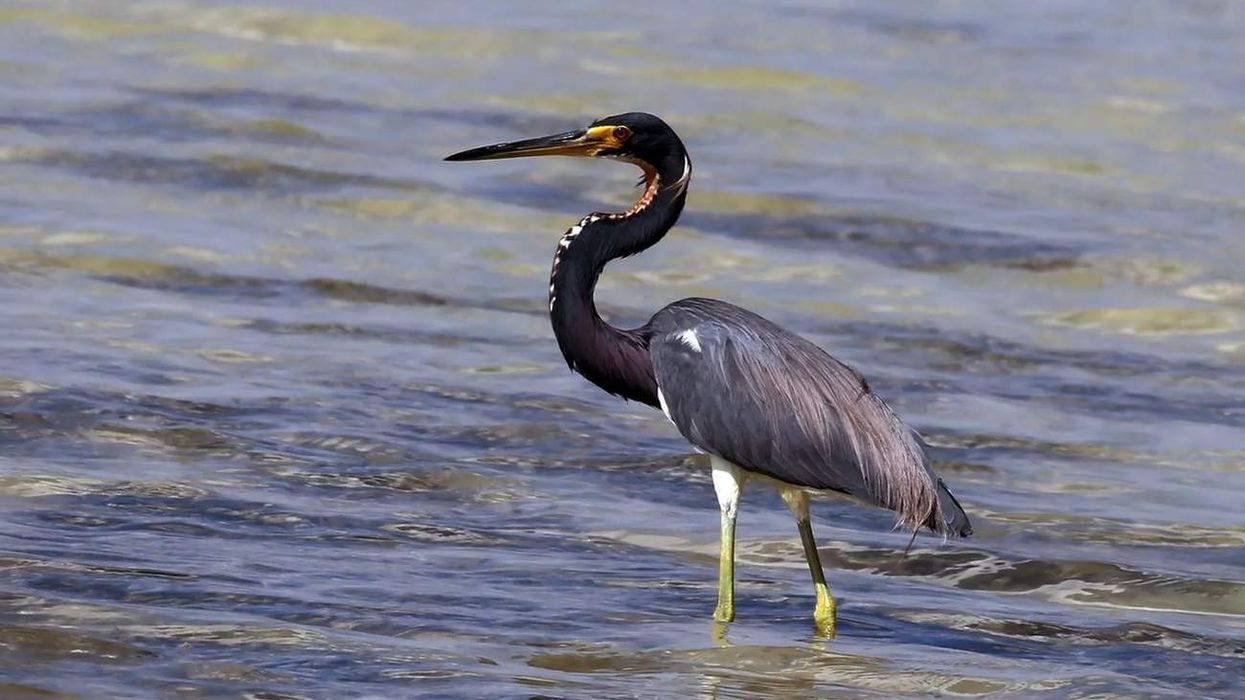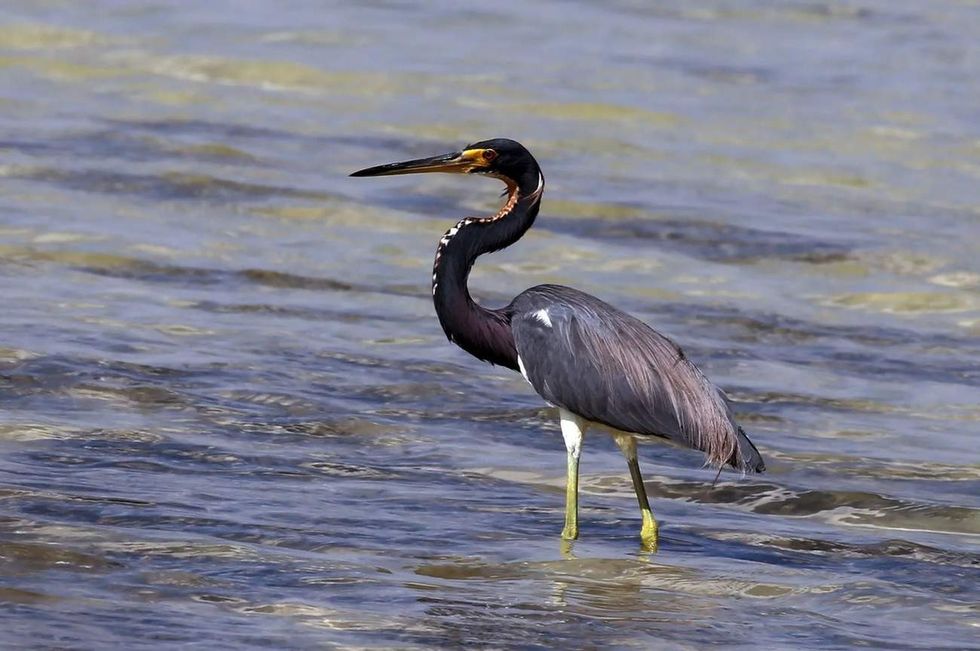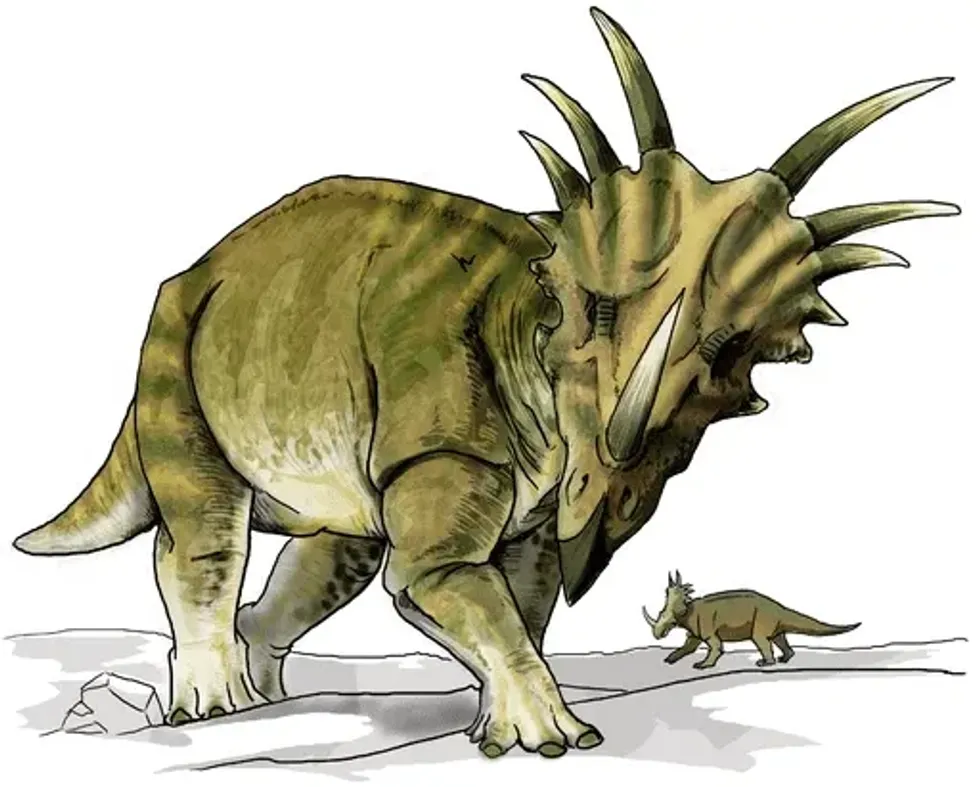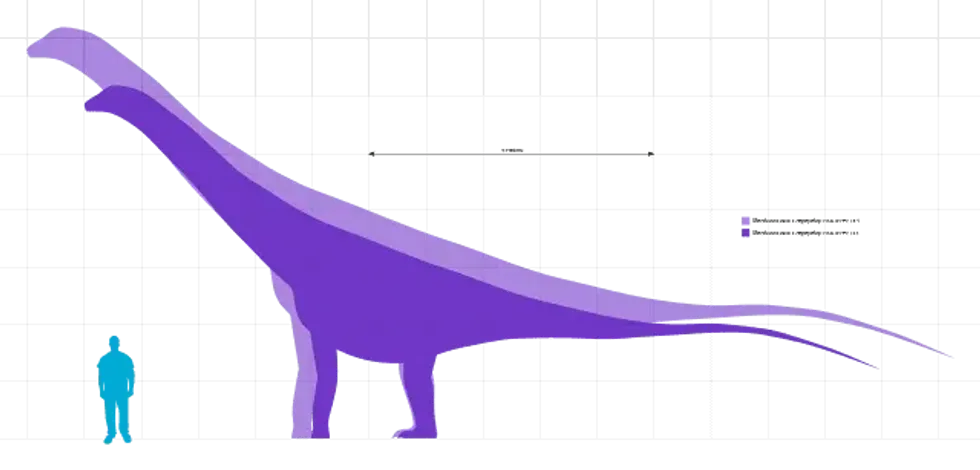The tricolored heron (Egretta tricolor) was known as the Louisiana heron with a colorful bill in North America and Central America. It is a smaller species of heron that is slender and sleek with a blue-grey, lavender, and white-colored body. It has a white stripe running from the middle of its sinuous neck and a white belly.
This feature differentiates them from other dark-colored herons. It is medium-large, long-legged, and neck with a long pointed greyish yellowish bill with a black tip. The feet and legs are dark.
They have brown-colored eyes. During the breeding season, the long bill becomes bright blue colored with a black tip.
The lores are cobalt blue. The iris will become red and the plumes on their head are white. The long feathers on the neck and mantle are violet or mauve.
They are smaller than other herons. They are found year-round in coastal estuaries, marshes, mangroves, saltmarshes, swamps, and intertidal zones. They nest in colonies with other herons alongside the water.
The male herons are slightly larger than the females. The tricolored heron (Egretta tricolor) comes in the coastal field with steady wing strokes with the head and neck drawn back.
The other New World medium Egretta is most closely related to this species of heron. Historically it is one of the most abundant herons in North America. After reading these interesting facts about tricolored herons, do check out other articles on the green heron and the yellow-crowned night heron.
Tricolored Heron Interesting Facts
What type of animal is a Tricolored Heron?
The tricolored heron (Egretta tricolor) is a type of bird found in the coastal water region of North, Central, and South America, and the West Indies. This bird species can be found on the western and eastern coastlines of the continent, with little variation in their colors and lifestyles.
What class of animal does a Tricolored Heron belong to?
The tricolored heron belongs to the birds or Aves class of animals. This bird species comprises colorful birds with long beaks, elongated necks, and slender bodies.
How many Tricolored Herons are there in the world?
The Tricolored Heron is not a threatened bird species. In some parts, the population of these birds in North America is declining due to loss of habitat, encroachment, and pollution.
During the nesting season, the birds are extremely vulnerable to human interference which may make the breeding birds abandon their nest and leave the young ones exposed. Sometimes the bird is hunted for food or its eggs.
The population in the Florida Everglades is declining rapidly due to habitat loss and lack of food. Since the species have an extremely large and wide range, the population is said to be stable, and in the United States, the population is around 200,000 birds.
Where does a Tricolored Heron live?
Tricolored herons are found in eastern and southern North America along the coast of Texas, Maine, and both coasts of Mexico, the Central America coastal region, the South American coastal region around the Amazonian delta in Brazil on the Atlantic coast, also in Northern Peru along the Pacific coast.
This bird species can be found in countries like the Bahamas, Antigua and Barbuda, Belize, Barbados, Colombia, Canada, Cuba, Costa Rica, Dominican Republic, Dominica, El Salvador, Ecuador, Guatemala, Guadeloupe, Honduras, Guyana, Nicaragua, Jamaica, Peru, Panama, Saint Lucia, Saint Kitts and Nevis, Suriname, Saint Vincent and the Grenadines, Venezuela, Trinidad and Tobago, Portugal, and Chile.
What is a Tricolored Heron's habitat?
The tricolored heron is found in shallow marshes and coastlines, mangrove swamps, mudflats, freshwater swamps, and river deltas. They are a migratory bird species and can be found in the southern regions during the winter.
Who do Tricolored Herons live with?
The tricolored heron (Egretta tricolor) are solitary bird most of the time who defends their hunting grounds strongly. During the breeding season, they do nest as a community. This bird species may also interact with other wading birds.
How long does a Tricolored Heron live?
The average lifespan of the tricolored heron is 17 -18 years. The age span might vary according to the habitat of these birds.
How do they reproduce?
The male will choose the nesting site before starting the mating ritual with a female. The nest is made up of sticks placed on reeds or in a tree, which they will build together.
The mating season begins in March when the water starts receding, which helps the parents forage for food faster, since the concentration of prey increases in these areas.
During these times, the parent won't go far away from the nestlings to look for food and can find food easily around them. Tricolored Herons are monogamous and mate with one partner only.
The female heron will lay three or four bluish eggs and the incubation period is 21 days. The chicks will hatch over several days, which makes the firstborn more experienced than the later ones.
The first hatchling is also aggressive towards the other hatchlings during food foraging and has a better chance at survival than the others. The female will lay an egg every day and both parents will take turns sitting in the nest.
The parent will bring food for the nestling and also allow them to forage near the nesting site.
After 35 days they are ready to go on their own. The success of the nesting sites is dependent on the cold, water levels, and predation during these times as the parents and nestlings are both most vulnerable during these times.
What is their conservation status?
The conservation status of tricolored herons is of Least Concern as their population is said to be stable in most regions. However, their population is declining in some regions due to habitat loss, lack of food, and human encroachment.
Tricolored Heron Fun Facts
What do Tricolored Herons look like?

It is a smaller species of heron and is slender and sleek with a blue-grey, lavender, and white body. It has a white stripe running from the middle of its sinuous neck and a white belly. This feature differentiates them from other dark-colored herons.
It is medium-large, long-legged, and has a long neck with a long pointed grey-yellow bill with a black tip. Their feet and legs are dark and they have brown eyes.
During the breeding season, the bill becomes bright blue with a black tip. The lores are cobalt blue, the iris is red and their head plumes are white. The long feathers on their neck and mantle are violet or mauve.
How cute are they?
They are beautiful, colorful, and slender animals to look at. They have unique coloring and shading on their bodies. The white running from their necks to their chest also makes them different from other herons.
How do they communicate?
The tricolored heron does not communicate vocally when they are solitary. They are known to vocalize when they are in their breeding community. They may produce a harsh nasal croak when they are troubled. Herons’ common call sounds like a loud sharp 'kyowk'. They may use non-vocal communication skills as well.
How big is a Tricolored Heron?
The tricolored heron is a medium-sized heron that is smaller than other heron species. They have a slender, colorful body that is at a length of 10-12 in (25.4-30.5 cm) with a wingspan of 36-38 in (91-97 cm).
How fast can a Tricolored Heron fly?
The tricolored heron can fly at a decent speed to save itself from predators.
How much does a Tricolored Heron weigh?
The tricolored heron weighs around 11.8-14.6 oz (350-415 g). They are slender medium-sized compact birds.
What are the male and female names of the species?
The female tricolored heron is called a hen and the male is called a cock. Their group is called siege, sedge, battery, herd, rookery, or hedge.
What would you call a baby Tricolored Heron?
The baby tricolored heron is called a chick or a juvenile tricolored heron. A tricolored heron juvenile is an adorable sight to behold.
What do they eat?
The tricolored heron, like all wading birds, is found standing in shallow water to find and catch prey. Their most common hunting technique is the walk-quickly-running-open wing tactile sequence. They may keep one foot forward and vibrate their foot rapidly on the bottom to flush out prey.
They can change their foraging technique to catch prey. They can also change their diet as per the change in environment or what prey is available. They mostly eat fish, and other amphibians, crustaceans, gastropods, leeches, worms, spiders, and insects.
Are they dangerous?
They cause no harm to humans in any way. However, human encroachment and pollution are causing their population to decline.
Would they make a good pet?
They are solitary creatures who prefer to stay in their habitats and are sensitive to any changes in them. They may make good pets but it is advisable to keep them in their natural habitat as they are wild animals.
Did you know...
No specific date or information appears about when the Louisiana heron became to be known as the tricolored heron. It could be because the same kind of species was found in other states too, which prompted the change of name.
The Tricolored Heron's breeding
They show their breeding plumage once they reach the age of sexual maturity and around the breeding season. During the breeding season, the bill becomes bright blue colored with a black tip.
The lores are cobalt blue, the iris will become red and their head plumes go white. The long feathers on the neck and mantle are violet or mauve. The feet are also pinkish.
The Tricolored Heron's survival
The tricolored heron faces the threat of encroachment and human disturbances, especially during the breeding season in the nest. They need a clean environment to survive with an unlimited supply of their food which is declining due to pollution and habitat loss.
Although their population is stable, in Florida Everglades, the heron is already facing endangerment due to these reasons.
Here at Kidadl, we have carefully created lots of interesting family-friendly animal facts for everyone to discover! Learn more about some other birds including the cockatiel and the willet.
You can even occupy yourself at home by drawing one of our Tricolored Heron coloring pages.









